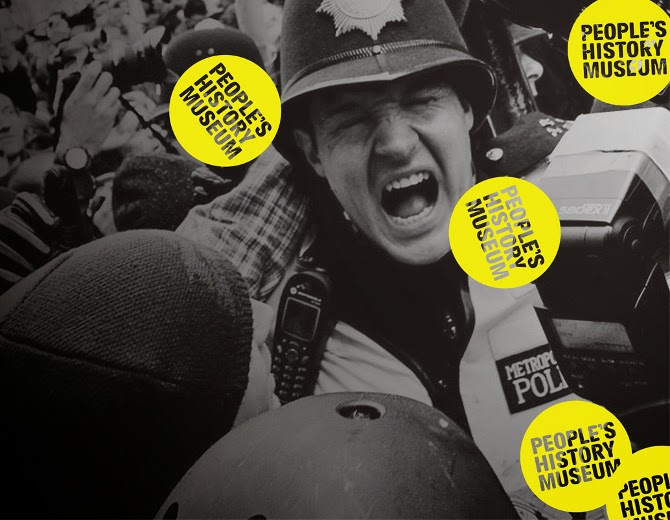Once again the nature of the study task meant that I needed to do this quickly.
I took the theme of the torn paper and used it to frame the images in question. To dictate the images I read through the content and found the most relevant images. The suggestion of physical layers and collage meant that the application of the people's history magazine logo worked really well, acting as a sticker for the content.
I quite like the full colour version and the bright pink of the logos stand our beautifully. However, I do feel that if the flyers were to be on yellow stock, so should the leaflet.
So, I printed onto the same stock and apart from an issue translating the opacity adjustments on the drop shadow of the torn paper, it looks ok.
The progression of information makes sense and the images relate to the nearest content.
Another issue that I would have liked to had time to rectify is the space that some of the text has. I should have allowed more. It feels a little squashed and I had enough space on the back of the booklet to allow for it. However, on screen it looked fine! I know that printing mock ups is important and this is a situation in which I should have done this.






















%2BVictoria%2Band%2BAlbert%2BMuseum%2C%2BLondon%2B15%2Bcopy.2282099.jpg)


















